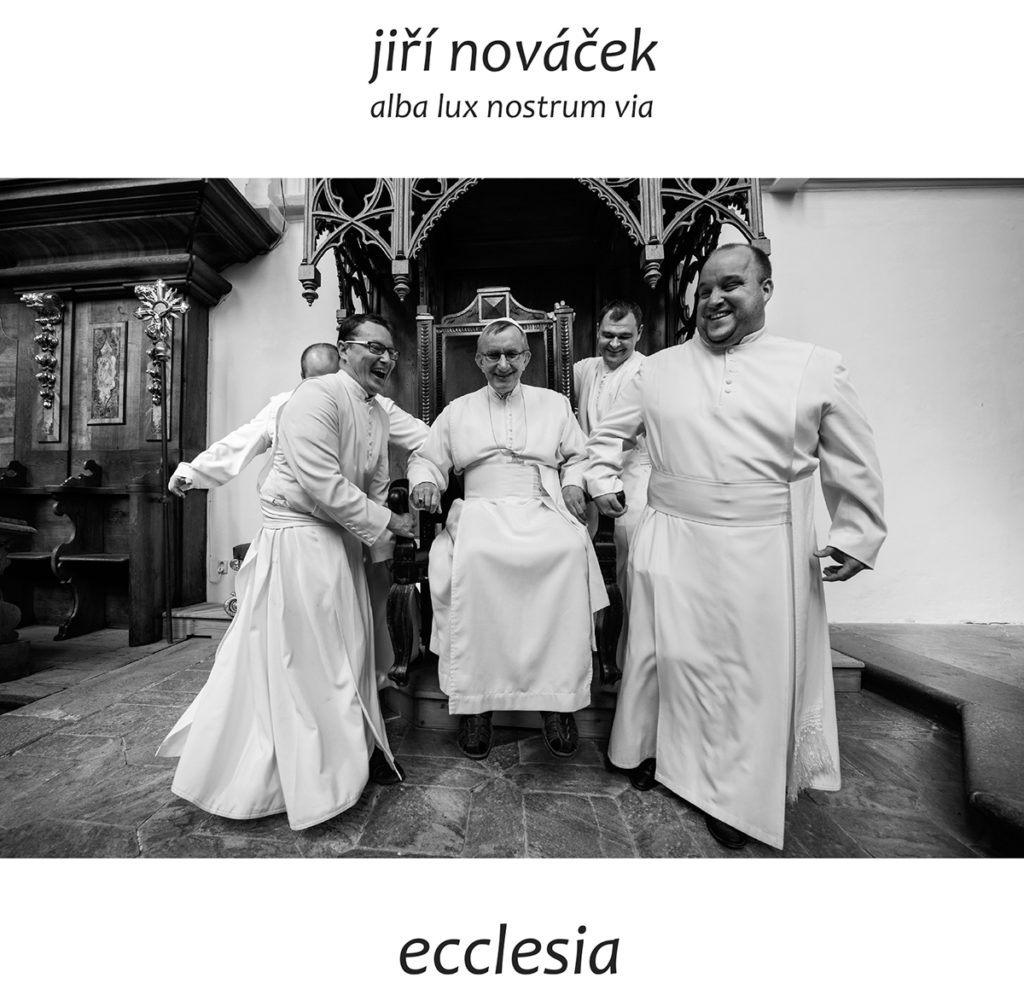I have already entered the premises of the monastery several times in order to advance and perhaps close a triptych of documentary collections with a similar spiritual theme, started once in the monastery of Benedictine monks. Now as an observer drawn into the story of the life of the Premonstratensians, experiencing here an atmosphere of peace, tranquility and a spirited approach to life.
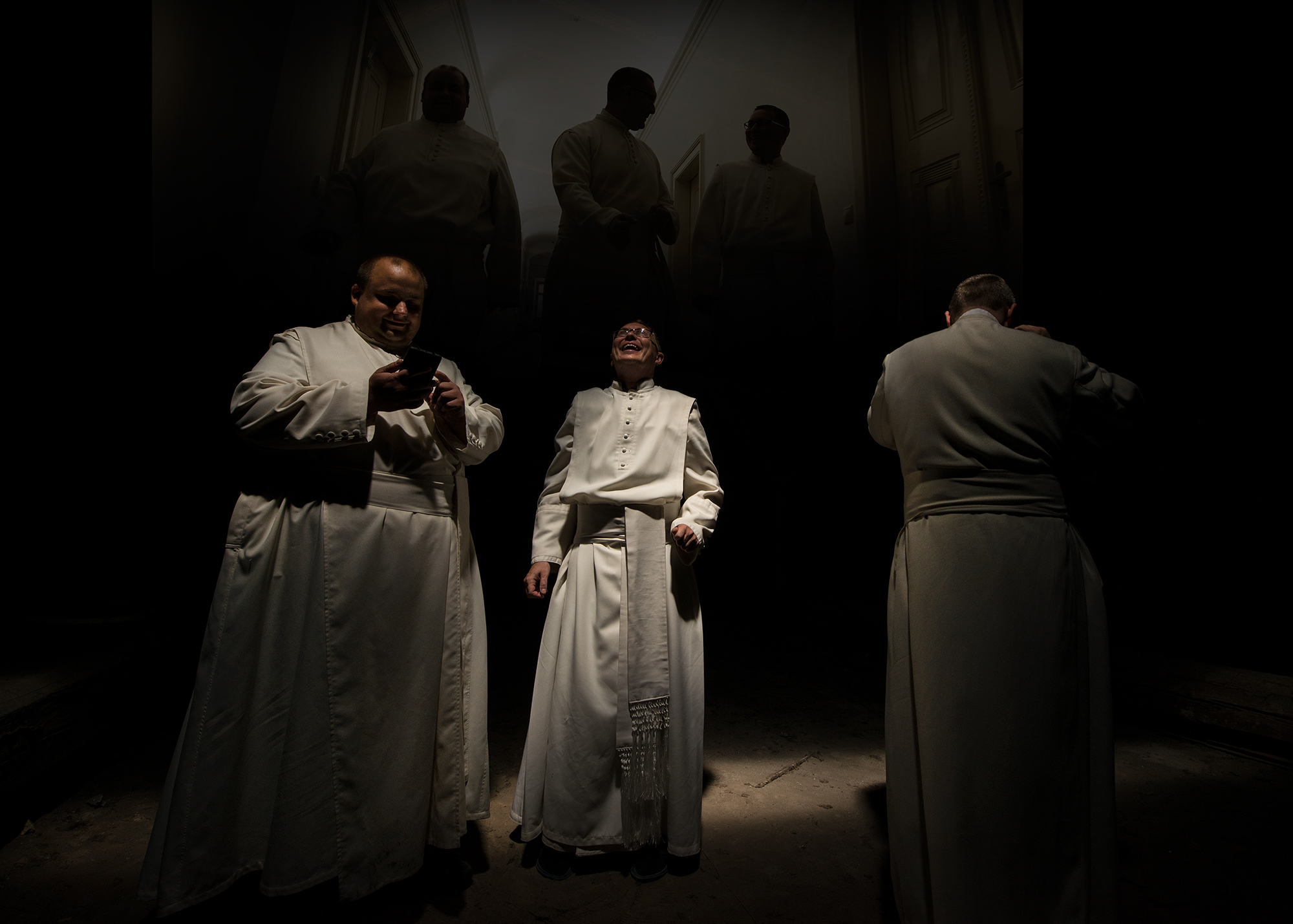
There was no effort to create an absolute impression of coherence, nor an effort to simply cross transcendent planes, but to capture scenes from earthly life into which the limits of the spiritual are sometimes projected, while others are concretized in given situations with more perfect fullness in space. At other times, it was my effort to comment on what is immanent and intrinsic to us, i.e. humor and a sense for it, and thus not to cross the boundaries of what is possible without any tone of loneliness.


The ensemble does not even use dominant colors expressing a certain symbolism in this spiritual world, but rather everything is left to the receptivity and sensitivity, or the individual’s own assessment.
I learned here that the community of the monastery is not only a goal for the seeker, but above all a helper and mediator. I also felt great inspiration here in a person’s approach to his own destiny. If we immerse ourselves in these images, as if we were entering a stream of laws, we recognize the fate of man’s meeting with God and see here a connection with the eternal spiritual core, which once again allowed me to be carried away and inspired.
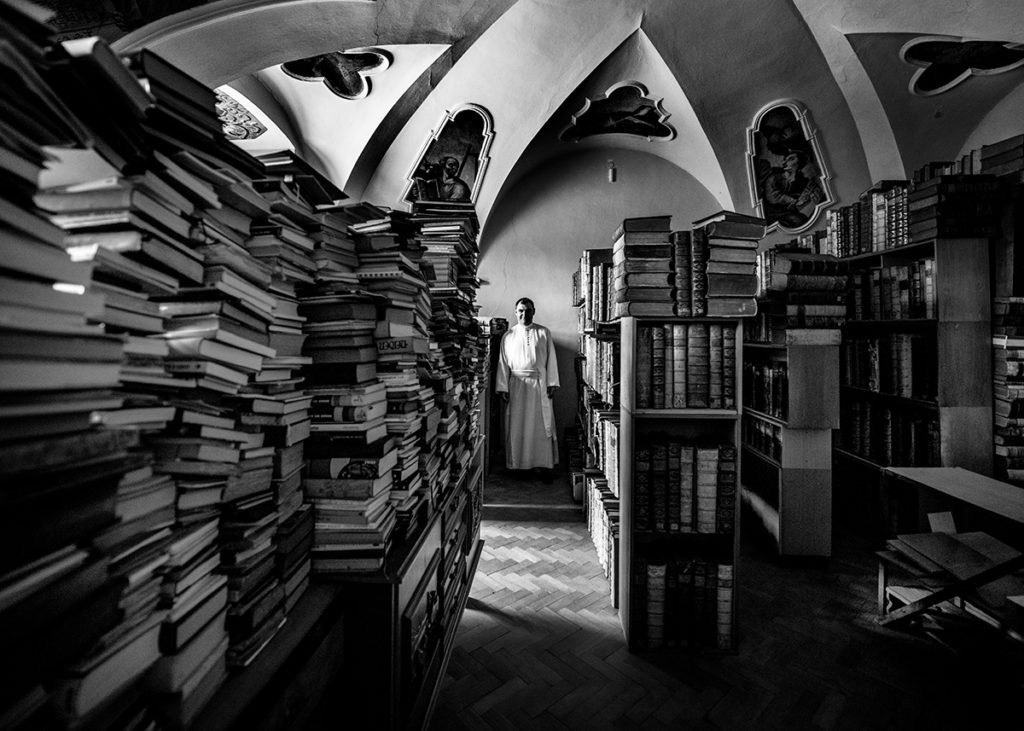

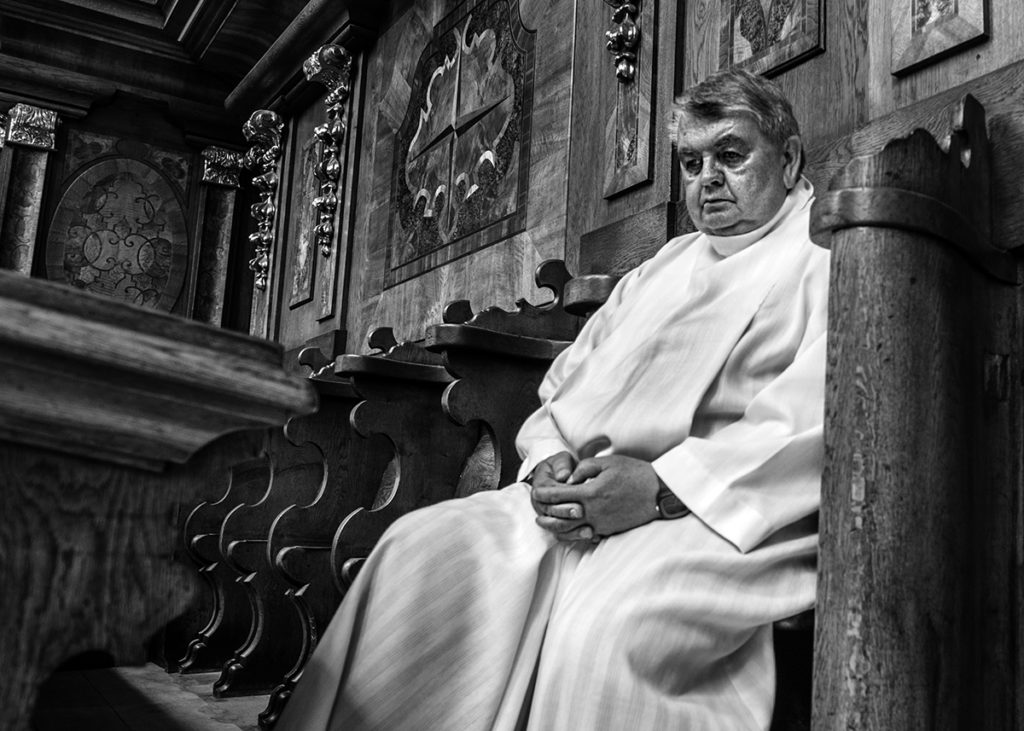
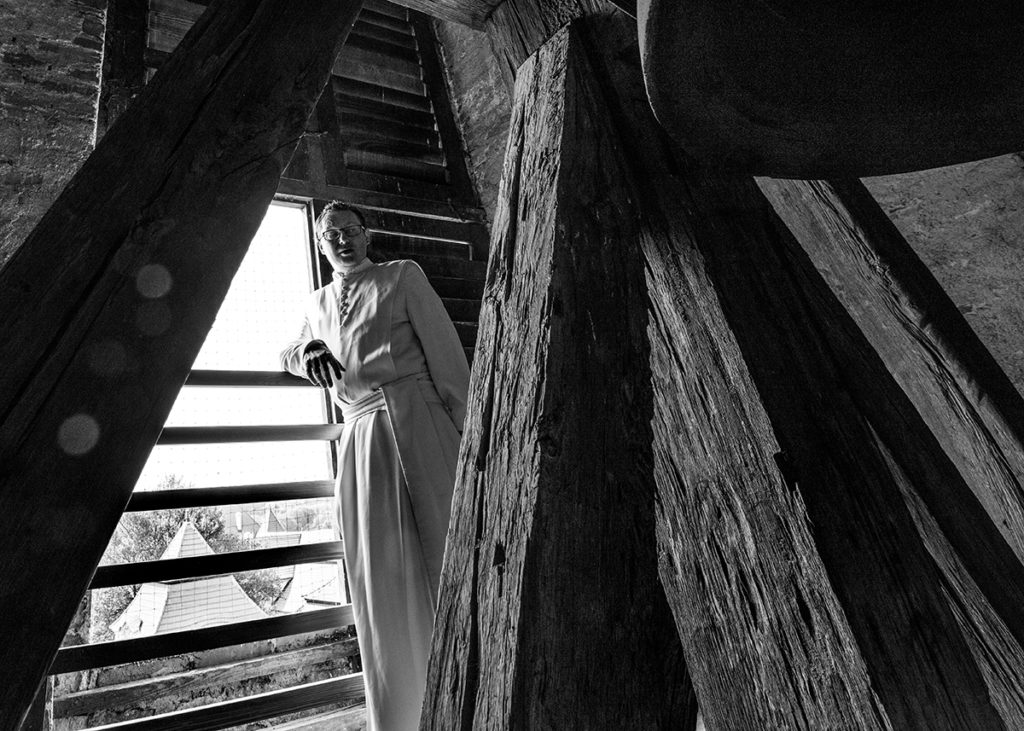
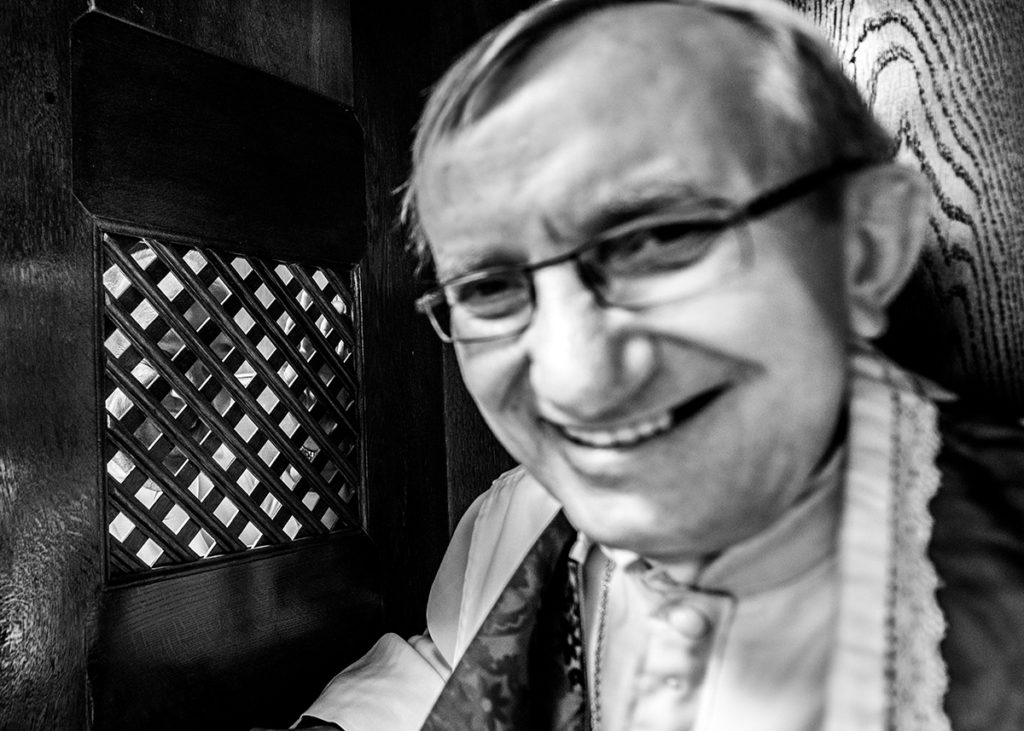
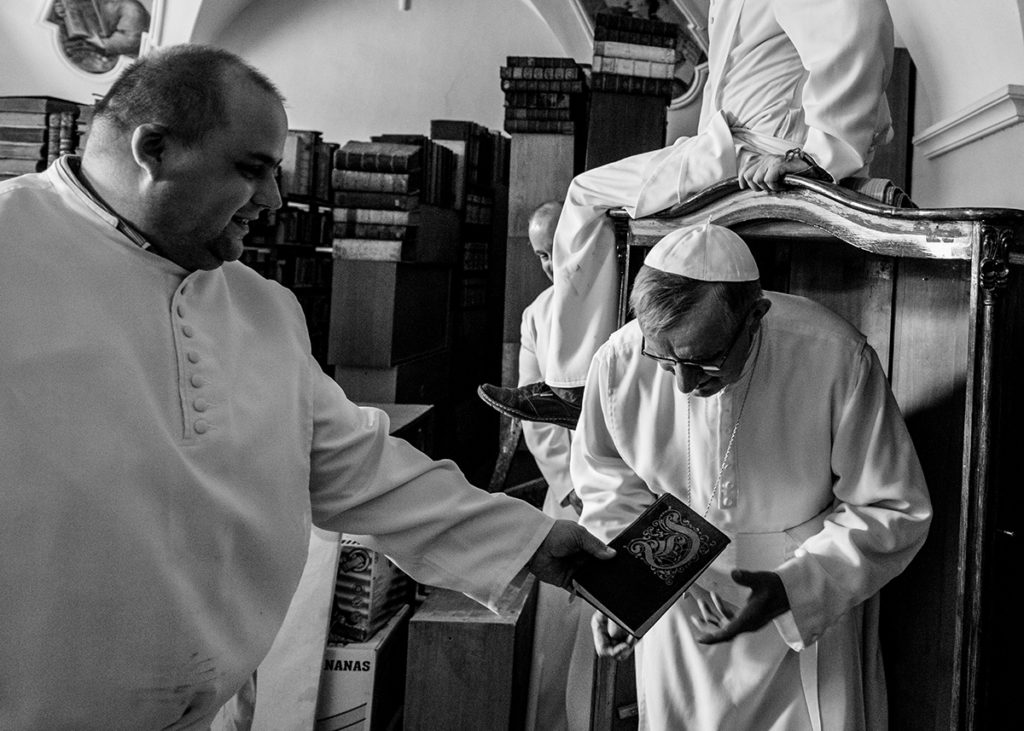
Evaluation of the author’s work by Jan Hlavatý:
The author proceeds carefully and sensitively when taking photo documentation, so as not to interfere in the ordinary life of the Premonstratensian brothers living in the place, but discreetly observes and records their activities. The individual photos are almost monochrome, only slightly tinted in dark coloration. This emphasizes the contrast with the white cassocks of the persons photographed. Some shots are created using the “fish-eye” technique, which enhances the dynamics of the captured space.
The footage alternates between moments of self-absorbed prayer, moments of friendly meetings with monks from related monasteries, moments of rest and fun together. The pictures also capture the sense of humor of the people present. The representative appearance of the monastery premises and the loftiness of the architecture of the respective chapel are also documented. Jiří Nováček’s photographs thus show the fulfilled meaning of the existence of the Želiv members of the order and their contemplative agreement with their mission.
Evaluation of the author’s work by Jindřich Přibík:
Writing something about a photographer and his work today is a tricky thing, which is closely related to the development of photography over the last decade. It is difficult to find the undercurrent that characterizes the author throughout the work. With Nováček, it will probably be a preference for the honest, years-long documentary work that introduces us to an environment that usually stands on the brink of mainstream society’s interest. Whether it is the extremely meritorious work on the series “Aristocrats”,
or, in a paraphrase, “It’s better to go mad in solitude”, about individualists living with their horses far from the noisy crowd or about children surviving in institutions – it is always a special group, lonely, fragile in its own way, despite the apparent privileges it may have. It is an honest act that we are left with the testimony that they are brought from the margins to the center, where they would never have reached without photography, and that through honest photographic work. If I emphasize this word, it is because nowadays such an approach to the topic is completely disappearing. Behind it, you can feel the awareness of the basics of photography, its limits and technical possibilities, where, for example, color tonality is presented in its muted, one would say delicious scale. Whatever the adjustment and creative solution of the final form in the special environment of the monastery, there can be no sagging, photographs will always be a worthy addition to the place. It is usual that in a set of photos some always appeal to you more than others. It would be a mistake to stick to your personal feeling, because the context and thus the tone of the photos change with time. However, this does not prevent me from highlighting three of them, where I feel that there is an open possibility of moving forward with Nováček’s work, as they extend from the area of the document to the quintessence of the symbol, where they even more exceed the displayed place and are a perfect expression of the “pars pro toto” direction, where from the document breaks through the boundaries into an artistic symbol that definitively transcends the period’s determination.
For myself, I believe that Jiří will find for himself the strong spring that has so far been somewhere influencing his photographic journey and will remain in its flow.
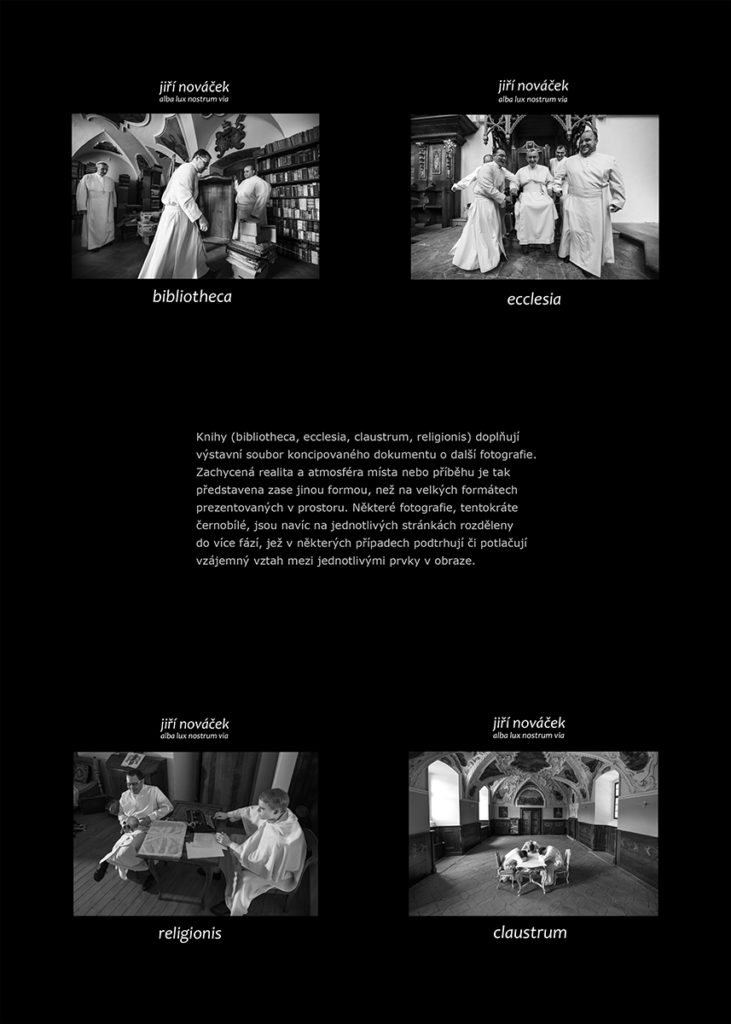
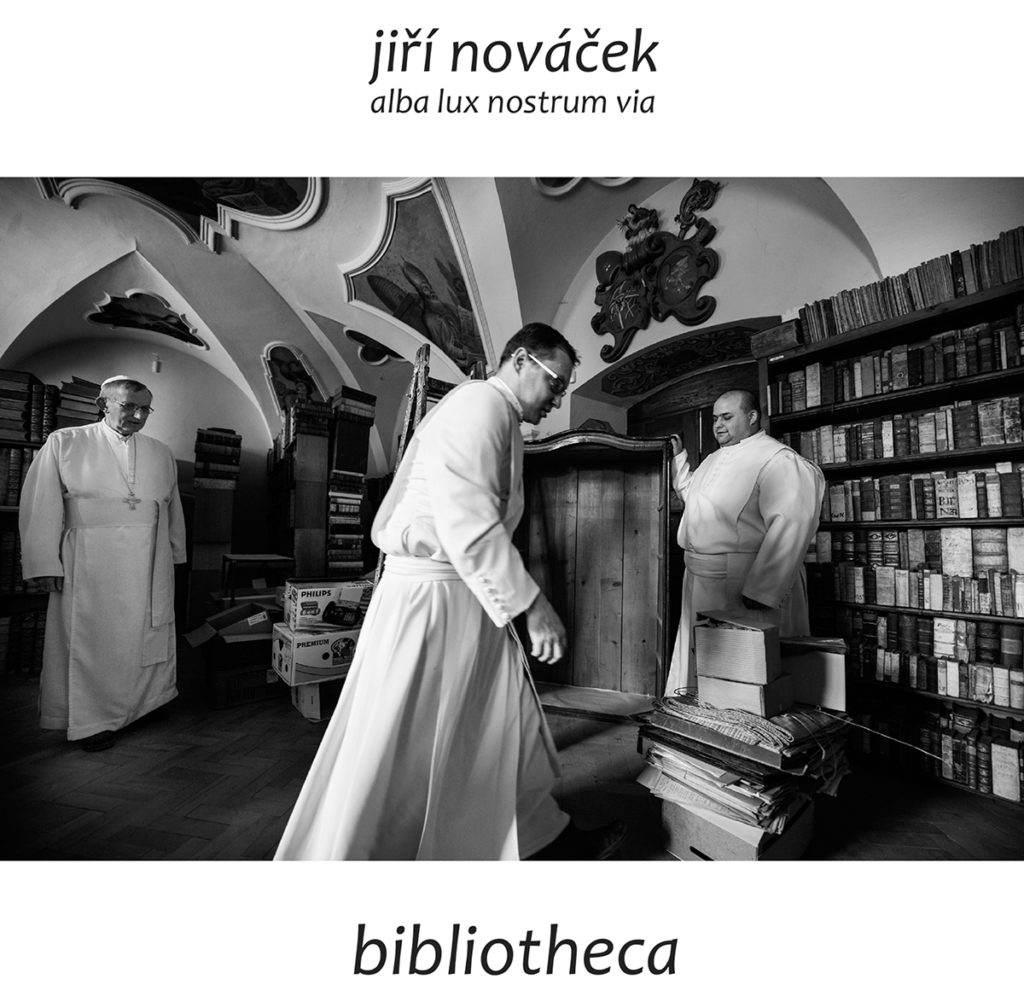
Books (biblioteca, ecclesia, claustrum, religionis) supplement the exhibition set of the conceived document with additional photographs. The captured reality and atmosphere of a place or story is thus presented in a different form than on the large formats presented in the space. In addition, some photographs, this time black and white, are divided into several phases on the individual pages, which in some cases emphasize or suppress the mutual relationship between the individual elements in the picture.

